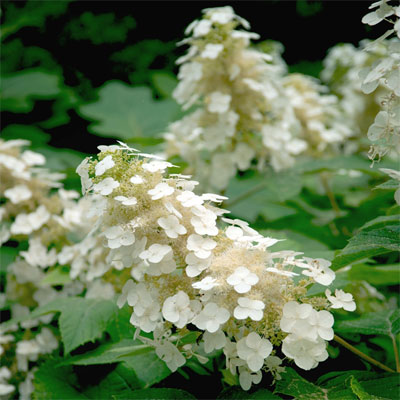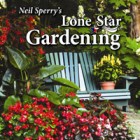From the Magazine

No shade-flowering shrub has outperformed oakleaf hydrangeas in the Sperry home garden. Photo by Neil Sperry.
A Heroic Hydrangea
We live on the floor of a creek-side pecan forest, so we really get almost no direct sunlight onto our landscape plants. Early on, that left me scrambling for every possible shade-loving shrub I could find, and when the bottle stopped spinning as it pointed toward oakleaf hydrangeas (Hydrangea quercifolia), I fell in love. Finally, I’d found a shrub that would bloom reliably beneath our 60-foot shade trees.
That was probably 30 years ago, and nothing has tarnished these stars in my eyes. They’re still as great as they always were, growing to 6 or 7 feet tall and at least that wide. And every May they reward me with foot-long floral sprays of bright creamy white. Set against their huge star-shaped leaves, it’s quite a show. They’re incredibly easier than their blue- or pink-flowering florist hydrangea sisters.
And, as if all that weren’t enough, the huge dark green summer foliage eventually turns shades of deep crimson by Thanksgiving, before it falls in December. Once the shrubs are bare, their shaggy-barked trunks become architectural pieces in the winter garden. Some people like to leave the old, dried floral bracts on their plants over the winter. I prefer a tidier look, so I trim them off as summer winds into fall.
I have 15 or 20 oakleaf hydrangeas scattered around in our woods. I cluster them several per spot, and I back them with deep green evergreen hollies for added contrast in colors. I normally buy 5- or 7-gallon plants, and I look for plants that have begun to branch and fill out. They cost a bit more than other more mainstream shrubs, but the look is well worth the difference.
Oakleaf hydrangeas have almost no insect or disease problems, but they do have one issue you’ll have to address. They are water-hogs. They’ll always be the first shrubs to dry out, and they don’t suffer quietly. Their large leaves wilt and flop painfully, so if you keep your eyes open, you’ll have no excuse for not knowing that they’re in serious need of thorough watering. So, it’s probably accurate to say that oakleaf hydrangeas are best suited to the eastern third of Texas.
If you have shade, and if your hands are worn out from all the wringing, follow my footprints to oakleaf hydrangeas. You won’t be sorry you gave them a try.

